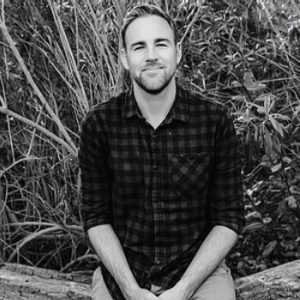Have you ever wondered why you love the people you do? Why you have certain fears in relationships? Patterns? Would you like clues to the themes of your earliest, most important relationships? Attachment and attachment theoryAttachment Theory explores how early relationships with caregivers shape an individual’s emotional d… is a fascinating subject within the broad domain of psychology and understanding it can provide some deep, meaningful insights into your life. I wanted to take this opportunity to summarize, as succinctly as possible, the history of attachment, what we know, and how it can help you live a better life. Attachment theory focuses on the quality of caregiver-child relationships early in life and how that correlates with aspects of mental health and relationship functioning later in that child’s adult life.
Let’s start with the history. John Harlow in the 1950’s ran a rather, let’s say, cruel study involving baby monkeys. He had them in a cage, scared them, and had waiting on the other side of the cage either (1) A mother-like figure made out of wire with a feeding bottle attached or (2) A mother-like figure made out of cloth, no feeding bottle. He noticed the monkeys had an immediate preference for the cloth mother, even though she had no food for the baby. This discovery shook a fundamental assumption at the time – there was more to mother than food and in fact, the tactile, relational security the mother provided trumped other needs. The monkeys with the “wire only” mother later shows signs of serious psychological disruption like trouble eating, rocking back and forth in a trace like state, and self-mutilation. Those monkeys damaged by the study never fully recovered and those forced into pregnancy later on were totally lost when it came to caring for their own offspring. (On another note, it makes me grateful for the stricter ethical code in today’s research standards). The research pointed out that contact and touch are vital to attachment, learning, emotional well-being, and psychological development.
Inspired by Harlow’s original work John Bowlby picked things up from here and elaborated further on Harlows original findings. He noticed that infants separated from their mother would go to extraordinary lengths (crying, clinging, desperately searching) to prevent separation from their parents and to re-establish closeness to a missing parent. His primary focus of study was on what he called “delinquent and affectionless children” that he believed experienced psychological issues stemming from maternal deprivation or abuse. After many years of qualitative analysis, he developed an evolutionary theory that suggested children come into the world biologically pre-programmed to form attachments with others. He believes there was a hard-wired biological system in place that was ready for action from the moment of birth. The ability to form attachments, he believed, was deeply innate and served as the primary function of how infants kept themselves alive. Figuring out how to connect to the unique caregiver that awaits us is what guarantees our safety, we must contour our emotional selves to those relationships instinctively to thrive, for better or worse. Further, he believed that if a child had not formed this kind of meaningful bond before age two and a half serious damage would be done and that it would be pretty hard to reverse that damage later on. He stated “the continual disruption of the attachment between infant and primary caregiver could result in long term cognitive, social, and emotional difficulties for that infant.” He believed that out of that bond formed an “internal working model” in the infant as a result of the quality of the mother-child relationship. He believes its influence later affected the adult child’s view of self, other, and the world. Essentially, an internal prototype for all future social relationships.
Now cue Mary Ainsworth, an American psychologist, who had worked under Bowlby in the early days of her career and started her own research on attachment in the late 1970’s. In my book, she gets a lot of credit. She took many of loose ideas and postulates from previous work and began putting a clearer framework to things through her research. Shed did this by creating what we now know as the “Strange Situation Experiment.” In this experiment, she put a one-year-old kid and their mom in an unfamiliar room (a playroom type of deal) and observed the child playing with their mother. After some time, she would have a stranger join them in the room, and then she would have the mother leave. Through a one-way mirror, Ainsworth and her team watched how the child dealt with the mothers leaving and the strangers presence. Did they cry? Did the not care? Did they care but not show it? Did they cease any exploration? After a few moments of the mothers absence, Ainsworth had the mother head back into the room and carefully observed how the child responded to the mother’s presence and soothing. Children responded to the re-introduced mother in varying ways and their response style was the birth of what we know today as the four main types of “attachment stylesAttachment Styles describe how individuals relate to others based on their early relationships with ….”
The main attachment styles she discovered are secure, anxious, avoidant, and disorganized. About 70% of the kids demonstrated the secure attachment style. Secure kids could happily explore their environment once more and interact with the stranger so long as their mother was nearby. When mother left they might freak out a little bit but they greeted her return in a happy, healthy, positive way. On the other hand, 15% of the kids demonstrated “anxious” attachment. These kids were afraid of the stranger, cried more and explored less. They panicked when mom left only to act salty, standoffish and mad when she returned. The last 15% or so showed avoidant attachment. Avoidant kids were fine or indifferent with the stranger, didn’t cling to mom, didn’t seem bothered when she left and showed little interest upon her return. Although, they discovered later that their physiology, like heart rate and other signs of emotional distress were exactly the same as the anxious child, they had just become hopeless about showing it.
Sensitive, appropriately attentive, attuned mothers raised securely attached kids whereas less responsive mothers who often ignored their children, were super-anxious, engulfing, or too intrusive raised insecurely attached kids (avoidant or anxious). Secure parents offer their children an environment of acceptanceAcceptance in CBT involves acknowledging difficult thoughts or emotions without trying to change or …, authentic/honest praise, non-shaming interactions, and warmth. They are appropriately tuned-into their children and present without being overbearing. They are able to reflect emotions and experience back to their children in a way that organizes and validates their experiences. In fact, internalizing the secure mothers presence is the basis for healthy self esteem as an adult. In fact, parents who are too cognitive or disconnected from their own feelings often have children who are alexithymic (a condition where you lack words for affectAffect refers to the experience of feeling or emotion that can be expressed through facial expressio…) and often generally anxious. So much can be said about how to create secure attachment as a parent and there are a ton of great resources out there. These include books like Raising the Secure Child, The Connected Parent, or for early infancy Elevating Child Care: A Guide to Respectful Parenting. Although I’m tempted to go into depth here this is a big topic and there are so many good resources out there to help guide you with fostering a secure attachment with your child.
Note, one subset of attachment style was not observed in the original experiment but has since come to be identified as “disorganized.” It is a much smaller percentage of the attachment pie, more extreme and much less common. The highly unresponsive or known to be abusive (emotionally ort physically) mothers had children who were absolutely terrified in unfamiliar situations and displayed characteristics of both types of insecure patterns. Lastly, Ainsworth also introduced the idea of mother operating as a “secure base” which has made its way into common parlance. This term highlights the secure mothers ability to provide a “safe, secure base” or relationship from which the child can go and explore an unfamiliar world. This security provides a psychological safetyPsychological Safety refers to the assurance that group members can express themselves without fear … net and reassurance to the child as they form a basic faith and trust that mother (and later for the secure adult, an internalized mother) is there to return to when needed which allows them to go, explore, and be on their own.
Later research has continued to corroborate this. Kids who are exposed to extended abuse, traumaTrauma refers to the emotional and psychological response to a deeply distressing or disturbing even…, and neglect are at a higher risk for psychological disorders, health problems, and substance abuse as adults. In one study, for example, Romanian children in understaffed orphanages (poor quality or absent relationships with primary caregivers) scored lower in cognitive tests and were twice as likely to exhibit symptoms of anxiety and depression as compared to their counterparts raised in quality foster homes.
Table below identifies the four major attachment styles:
| Attachment Type | Caregiver Behaviors | Child Behaviors |
| Secure | React quickly and positively to the child’s needs. Deeply attuned and responsive yet also allow the child space to be and play. | Distressed when caregiver leaves and happy when they return. They seek comfort from caregiver when scared or sad |
| Avoidant | Unresponsive, unavailable, uncaring, dismissive, rejecting type of parent | No external display of distress (although bio-markers demonstrate distress). They don’t acknowledge return of caregiver. Does not seek or make contact with caregiver. |
| Anxious | Either on one extreme responds to child inconsistently or floods them with too much parental anxiety or intrusiveness (0bsessive, depressed, or overwhelmed type parent) | Distress when caregiver leaves and yet not comforted by their return |
| Disorganized | Abusive or neglectful parenting. Responds in frightening or frightened ways | No attaching behaviors. They often appear dazed, confused, or apprehensive in presence of caregiver |
Attachment styles in adulthood:
|
SECURE Comfortable with intimacy and autonomy in close relationships. Self-confident and resolves conflict constructively. Empathic and attuned to the other. Generally healthy and well-adjusted personality type. Partner feels loved and allowed to also be their own person in the relationship. |
ANXIOUS Overly invested and involved in close relationships. Dependent on others for self-worth. Demanding, needy, needs lots of reassurance and validationValidation in CBT involves recognizing and acknowledging one’s feelings or thoughts without judgme…. Has trouble with any distance emotionally. Partner feels overwhelmed and loses desire quickly. |
|
AVOIDANT Compulsively self-reliant. Distant in relationships. Downplays the importance of intimate relationships. Stonewalls, shuts down easily, feels weak for speaking their needs. Partner feels shut out, lonely, unloved, questions their worth and importance. |
DISORGANIZED Chaotic in relationships. Moves between idealizing and devaluing partner. No clear sense of self. Can demonstrate both anxious and avoidant qualities. Likely personality disorganization. Others can be both highly triggering and highly soothing. Move between roles of rescuer, aggressor, and victimized. Partner is scared, confused, unsure how to connect. |
How Therapy Can Help
Therapy is tremendously helpful at resolving unhealthy attachment styles. The therapeutic relationships is the primary vehicle for this change. Obviously, these patterns did not emerge overnight and it may take some time to move from an insecure position (anxious, avoidant, disorganized) to what research calls an “earned secure” attachment style. Psychologists are trained in how to create the type of relationship that allows for this kind of change. Proper emotional attunement, consistency, boundariesBoundaries in group therapy are the limits established to maintain a safe and respectful environment…, and authenticity amongst a host of therapist factors contribute to changing/influencing any patient’s attachment style. Again, this takes some time but it can absolutely happen. Gaining awareness over your attachment style is helpful, but it is the ongoing experience of this new kind of attunement that facilitates change. Knowledge is necessary but not sufficient in altering attachment style. At Keil Psych Group, all of our therapists are attachment-informed therapists and attachment work is in the bedrock of any quality psychotherapy. If this subject has caught your attention please check out the links below for additional resources. Please feel free to reach out to us with any questions you might have. We look forward to helping you and your relationships grow healthier and happier.
Attachment Quiz:
https://psychologytoday.tests.psychtests.com/bin/transfer
Books on Attachment:
Attached: The New Science of Adult Attachment and How it Can Help You Find – And Keep – Love





